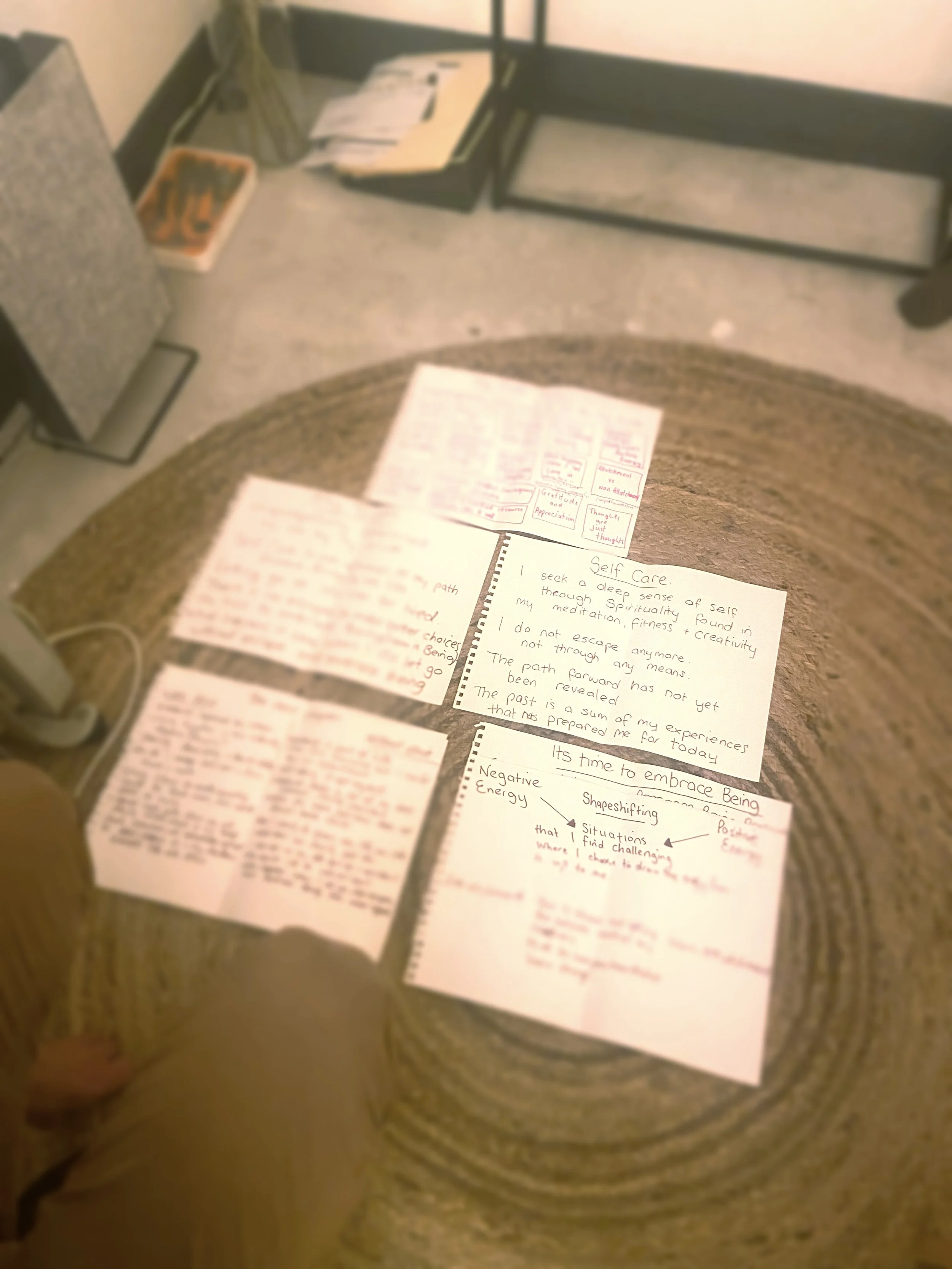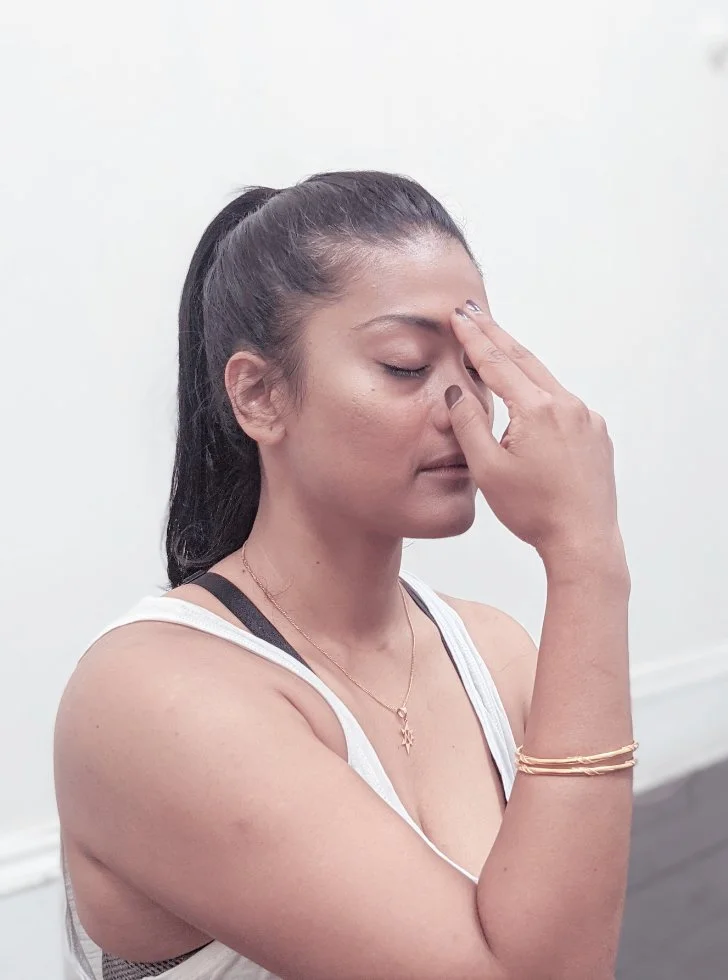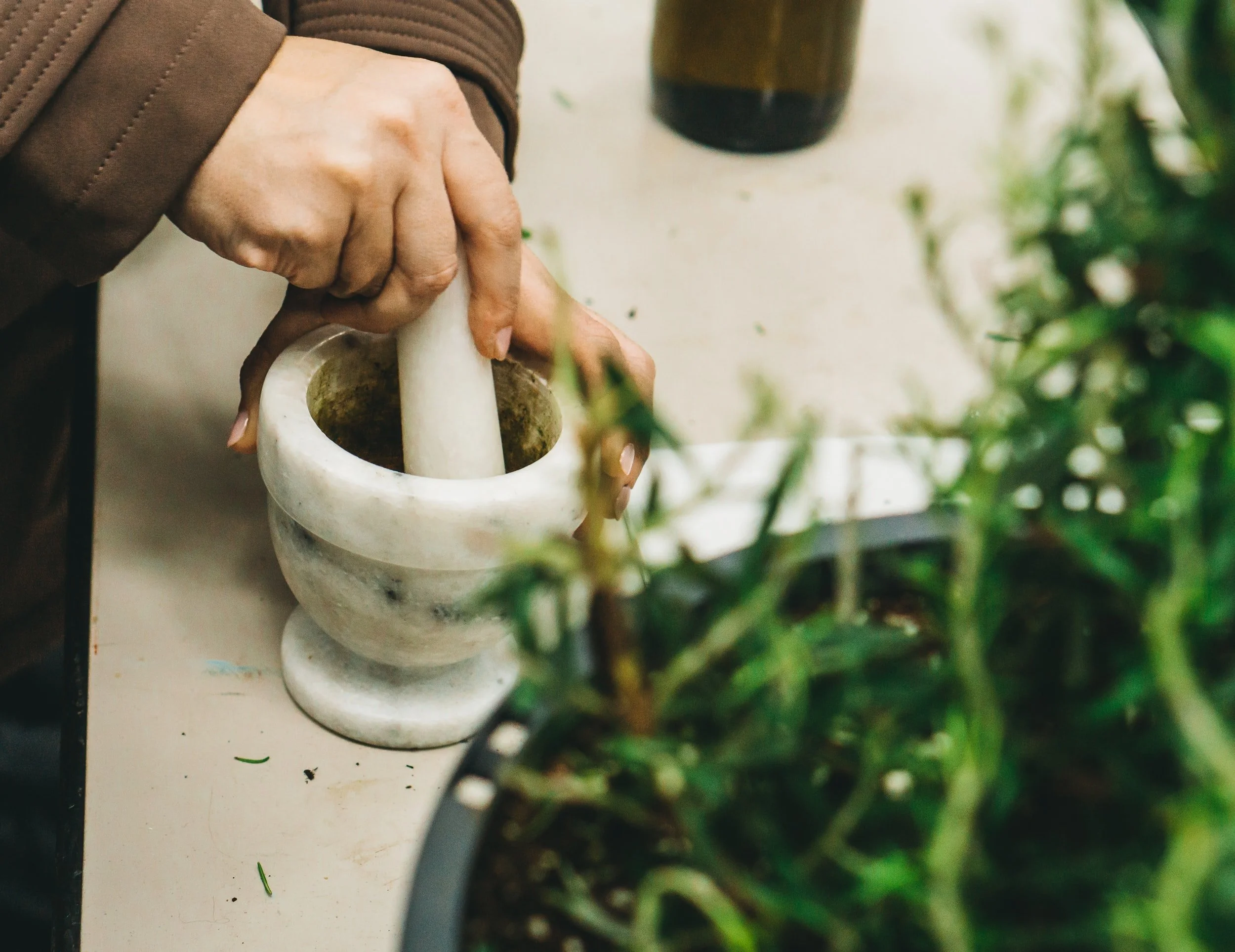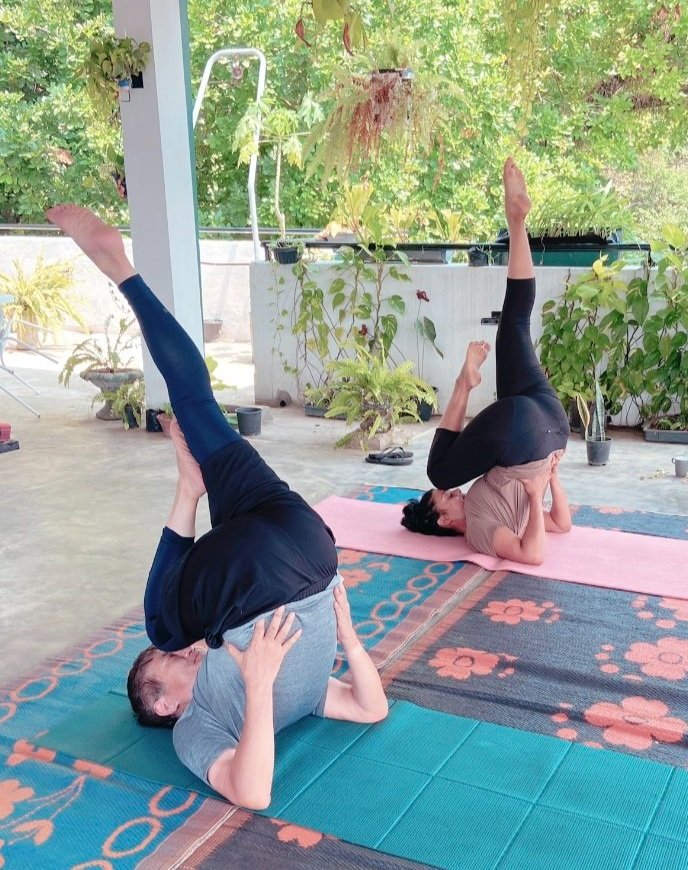Recently in a group discussion on the subject of mindfulness and meditation, we explored the effects of meditation on brain activity and how that impacts our daily lives, emotional and mental balance as well as overall wellbeing.
There are various ways that the brain is transformed in meditation, each distinct in activity; fluctuating with our actions and feelings. In this thought-piece I like to refer to the ‘path’ to meditation as a stepped process: starting with dharana (focused concentration, mindfulness), then dhyana (meditation, contemplative stillness) leading to samadhi (expansion, absorption). When practiced correctly, this process can transform the frequency and activity of the brain from higher to lower frequencies. This can profoundly impact how we experience life, by aligning individual with universal consciousness.
So many people around the world today feel tired and stressed from busy days and lives. While we might think that getting more sleep is the solution, true rest involves more than just sleep.
Read MoreThe Yogic prayer before eating, sometimes referred to as "Brahmarpranam” is a practice that acknowledges the interconnectedness of all beings. By expressing gratitude for the food, it helps to mindfully practice the process of eating - and creates an awareness of the energy and effort that has gone towards to bringing sustenance and meals to the table.
Read MoreHere is a sample menu for a 3 day cleanse, that I usually follow and also recommend to others….
Read MoreEvolution stems from the union and realisation of purusha and prakriti from a state of primordial stillness
Purusha = Masculine energy; passive awareness, the silent observer, the witness
Prakriti = Feminine Energy; unmanifested seed holding the potential for all of creation, all the attributes of experience.
Prakriti is the innate seed of potential + Purusha for the seed to be opened.
Masculine = doing, seeing. Feminine = innate qualities, all potential lies within.
Many of us today exercise a stronger dominance of the masculine, the doing. When you are stuck in the overactive masculine, your worth then becomes linked to how much you achieve.
To validate this worth we need to keep doing, proving to feel satisfied, enough.
Activation of the feminine is simply remembering your worth is INNATE.
This looks like connecting with your body by listening to it, slowing down, staying receptive to support, connection, love, flow, trusting. It’s open and flowing, non-linear.
Read MoreFilling up your cup daily, helps you make sure you have more to give both yourself and your loved ones consistently and with ease. Fitting self care and pauses into the day can be tricky - when / how / what to do becomes all too much and a lot gets put off in overwhelm!
Here’s a handy set of meditation and mindfulness prompts to save and keep on hand for when you can’t do the thinking / can’t make it to a class / only have a few minutes. I’ve broken it into 2 occasions: quick and easy sessions and deeper, slower sessions for when you have TIME.
Read MoreFood consumption today goes beyond pure sustenance and nourishment – it has become a vehicle for connection, socialising, activity and significantly – emotional regulation.
Nourishment is one of the first and key ways that humans learn to feel cared for and held. It brings back memories of old times, family, friends, culture, tradition… it gives a sense of belonging, safety, comfort.
However, as we move through the ‘waves’ and cycles of life it is easy to start attaching to food for safety, comfort and often for distraction. This seeking of comfort leads to over attachment, sluggishness, suppression of the real issues. It leads to a low and overburdened agni (digestive fire), causing excessive and then imbalanced kapha dosha (earth, water elements) and beyond this it leads to the formation of ama (toxins) from undigested food and also emotional matter.
Read MoreWe are pleased to announce that we now offer Remedial Massage Services along side our traditional Ayurvedic Massage services.
Introducing to you, the incredibly experienced Eduard Elkin has over a decade of knowledge and successes working as a remedial massage therapist, healing people of all ages and activity levels, including working at the Prahran football club.
Eduard specialises in treating chronic musculoskeletal pain and has a very high success rate. Focusing on manipulating key trigger points, he is able to locate and treat the epicentre of the problem providing immediate pain relief for muscles and joints.
Read MoreTo help prepare for Winter, we are offering a 10% discount on Ayurvedic consultations and Massage focused on ‘kapha’ balancing - think warming, invigorating, uplifting massage.
Read MoreVata follows the principle of movement and is a by-product of space and air. Similar to air, it is cold, light, dry, rough and mobile. It governs movement, respiration, the heart and nervous system.
Pitta is the by-product of fire and water. Similar to fire it is hot, light, dry, sharp and penetrating. Manages metabolism, our digestive system and emotions.
Kapha is the stabilising force and is a by-product of earth and water. Similar to earth it is heavy, wet, cold, soft and smooth. It manages our bodily immunity, vitality, hydration and strength.
Another element that is key is ‘ama’ or a toxic by-product of undigested physical and energetic matter.
Read MoreKeeping the doshas balanced during and after long airplane flights can be tricky, as we sit in tightly packed and poorly ventilated, cold and dry spaces for extended periods, moving through space. This can aggravate our Vata dosha made up of the air and space elements that are also cold, dry, rough, mobile and erratic; inviting insomnia, dehydration, constipation, tiredness and jet lag into our lives.
The ayurvedic way can be useful in rebalancing this, making travelling easier on both the mind and body. Here are some travel ideas from a recent trip with a long flight to and from Sri Lanka to Melbourne.
Read MoreCombining kriyas with classic hatha asana (posture) and pranayama (breath)
This asana here is Ardha Baddha Padmottanasana (Half Bound Lotus Standing Forward Bend) that stretches the muscles in the lower back, hip, hamstrings, and shoulders. It is derived from the Sanskrit words Ardha=half, Baddha=bound, Padma=lotus, Uttana=intense stretch, and asana=pose. This is an intense forward bend pose that is in the combination of Ardha Padmasana and Uttanasana. To build up to it, start to practice half lotus and standing forward bends and then begin to combine them, starting by wrapping the arm around the body before progressing to reaching for the foot. A great way to develop balance, stability and flexibility. It activates the solar plexus chakra, and stimulates the ajna and crown chakras due to the inversion.
According to the Hatha yoga pradipika, Surya bhedi pranayama or right nostril breathing is one of the most beneficial pranayama (breath work) techniques in activating and energising the body. In Ayurveda too, this pranayama technique is used to dispel a kapha vitiation leading to lethargy, sluggishness, low energy, low motivation and a feeling of dullness.
The focus of this pranayama technique is to activate the surya or ‘sun’ element in your body, via the right nostril and ‘Pingala’ nadi which aligns with the vitality of the sun.
Read MoreDeveloping alternate pathways or themes and mapping these out can help to understand what areas in our lives need attention and what is already working well to guide our energy and resources to where it is needed most.
This is some of narrative therapy in action, supported by the ancient wisdom of the sutras (an area of interest for some clients in particular). This technique can be particularly helpful for those struggling with Anxiety, Attachment issues, Attention-deficit/hyperactivity disorder (ADHD), Depression, Eating disorders, Grief, Post-traumatic stress disorder (PTSD).
Read MoreAlternate nostril breathing (From Asana Pranayama Mudra Bandha by Swami Satyananda Saraswati)
These techniques have a calming effect and relieve anxiety, improves concentration and stimulates ajna chakra. The ratio 1:1 in stage 1 establishes a calming rhythm for the brain and heart, assisting people with cardiovascular and nervous disorders specifically, and stress-related conditions generally. As the count is extended, the breath slows down. The respiration becomes more efficient because the air flow is smoother and less turbulent. This ratio helps people with respiratory problems such as asthma, emphysema and bronchitis.
Read MoreKapha aggravations can impact the health of the kidneys, lungs, mucus membranes, bladder, fluid content. It can lead to swellings, heaviness and accumulations of mucus in the body. It increased by the salty, sour and sweet tastes e.g. salt, citrus fruits and refined sugars. Kapha is decreased by pungent, bitter and astringent tastes (e.g. turmeric, bitter green, black tea, ginger).
Here is a sample meal plan, herbs and spices to consider in winter months.
Read MoreAyurvedic wisdom places a significant focus on the connection between nature’s seasons and the doshic balance within us. Staying mindful of the time of year and adjusting your routine can help to keep imbalances at bay.
The key is proactively managing the elemental balance that fluctuates in each season. For instance, pitta dosha increases in late spring as the weather warms up and we start to approach summer season, so you’d incorporate more cooling foods and lifestyle practices. Similarly, while we might have been managing vata dosha through early to mid autumn, we’d now slowly shift gears as the weather becomes cooler, wetter and more earthy at the end of Autumn nearing the approach of winter in Australia next month (June).
Read MoreOn my most recent trip to Sri Lanka I attended one of my mum’s yoga classes and learned this fantastic asana to help activate the ajna chakra, which is located between the eyebrows and is indigo in colour.
It governs insight, intuition and the function of brain, ears, eyes and the hypothalamus, which works with the pituitary gland to secrete and regulate a number of hormones. When it is at its full potential you are more able to stay calm under pressure, think more clearly and decisively, become more self aware and able to tap into your gut voice and intuition. It brings deep calm and steadiness.
Read MoreWe have all had moments that we’ve been triggered by a situation or person leading to an intense emotional response (sometimes ones we regret). Some are skilled or mindful enough to let that response be what it truly is – an emotion. They experience it, acknowledge it, allow it to dissipate. In the absence of this mindful processing or regulation that emotional response usually escapes, becoming a reaction. It is in this stage or the ‘heat of the moment’ that we can say or do things we may later regret.
Read MoreFor anyone feeling anxious or a little edgy, try listening to or playing along with a Tibetan singing bowl. Simply rest the bowl loosely on the palm of your hand and strike it once, focusing on the sound and its vibration, and leaving all other thoughts aside just for that moment. Then when this fades, strike again and repeat the process, all the while allowing this vibration to displace that edginess
Read More


















